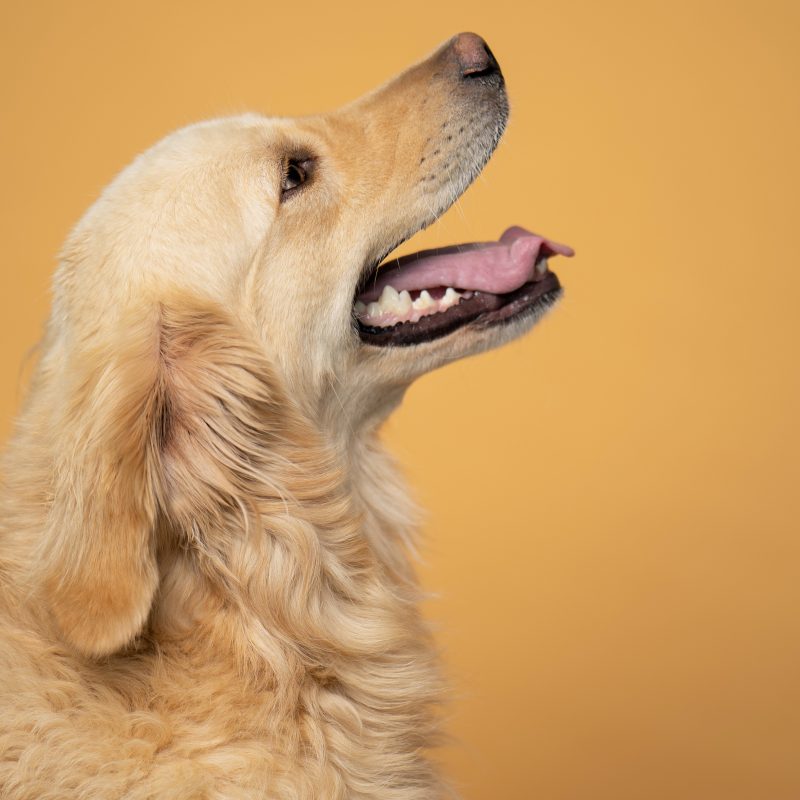What are slow-feed treats?
Thankfully, these kinds of treats are almost exactly what they sound like. They’re treats that are slow-fed to your dog through small, carefully controlled portions. They earn their name through their similarity to slow-feed bowls or puzzle bowls. Their goal is the same; to help your dog enjoy their tasty treats and also watch the portioning.
Slow-feed treats tend to be smaller in portion than classic treats, and they are nutrient-rich, just right for your dog’s tastebuds, and ideal for training sessions!
The concept of slow-feed treats for dogs is still relatively new compared to classic options, but their convenience and health benefits have them rising in popularity with avid dog care specialists!
The benefits of slow-feed treats
The classic dog-treating method has long held its position as the “best” way to reward your dog, so let’s take a moment to understand just what the benefits of these slow-feed treats are.
- Helps your dog learn habits: Dogs are often treat-motivated, of course. Slow-feed treats help your dog to learn the habits of the training command that you’re giving rather than just simply doing whatever will give them the treat. It helps them to learn the desired habit easier and better.
- Blend treating with other types of training: You also like that you can blend treat training with other types of training; this includes clicker training and other non-treat types. Since treats are slow and small in portion, your dog will be more attentive to getting their reward, and you’ll be relieved not to spend a fortune on treats!
- Promote a better bond between human and dog: While some dogs are food-motivated, others aren’t as much. By focusing on slow-feeding treats, you can bond better with your dog. Since the treats won’t be as dominant in the training of the behavior process, your dogs will focus their energy on impressing you and obeying you. It can help create a stronger bond.
- Prevent obesity in your dog: One more benefit is that you can help prevent your dog from dealing with obesity, which is a problem more and more with treat-based training. Slow-feed treats are smaller in portion, healthier, and not as heavy in their use.
How to choose the best long-lasting slow-feed treats
Now that you can see just how beneficial slow-feed treats are for your dog’s health and overall enjoyment of life. Let’s take some time to figure out how you can choose the best treats. Some of the main details to focus on during your hunt are below.
- Get nutritious treats: First and foremost, you’ll want to always try to find nutritious treats. You can find the right starting point by checking the bag and labels for the Association of American Feed Control Officials (AAFCO). This certification means that they meet health requirements for dogs, and you can trust them. A lot of food types have this on them, too. Worst-case scenario, you can always use kibbles of their food as treats.
- Stay below daily energy allowance: Dogs have a daily energy allowance in their diets. You should do your best to keep your dog’s treat amount below 10% of that number. Otherwise, your dog could be more hyperactive. If you need help working out those numbers, your vet can help.
- Stick to a low-calorie diet: If you do go with fattier or less nutritious treats, your vet will recommend that you go with a low-calorie diet otherwise for your dog. This helps protect their health overall and offsets the unhealthy portions of your chosen treats so that you can feel assured your dog is in good health.
- Avoid sugar and carbs in treats: When it comes to picking your slow-feed treats, try to find ones with no sugar or carbs. These may taste tempting for your pet, but are not healthy nutrition for their digestion.
- Fatty acid treats are best: Dogs benefit a lot from fatty acids. To help gain every little bit of health benefit that you can get, aim for treats that are high in those fatty acids. Dogs also like their taste, so it helps to incentivize them a bit more where they otherwise might not want to eat the healthy treats.
- Try human fruits and veggies: There are many human fruits and vegetables that can be great slow-feed treats! Dogs and human food may not always get along, but carefully portioned human vegetables are a wonderful exception allowing your dog to enjoy better nutrition. Great treats include seedless watermelon, bananas, broccoli, green beans, carrots, peas, and apples!
- Buy in bulk or make your own: To make the most out of nutritious slow-feed treats for your dog, consider buying in bulk, which will last you longer and cost less per unit. Or, get out your baking supplies and learn how to make your own!
Treat type matters
Your dog deserves the best approach to health, and the type of treats that you give them matters for their health. Slow-feed treats are healthy, delicious, and perfect for your pocketbook. Your dog relies on you to make healthy decisions on their behalf, so this is a wonderful, fun way for you to do that. Make sure to consult your vet when you need help navigating the world of healthy treats!
There’s a whole lot to know and love about dog treats, as it turns out. This will be your go-to hub for doing what’s best for your dog, their health, and your overall connection with them!
SOURCES
